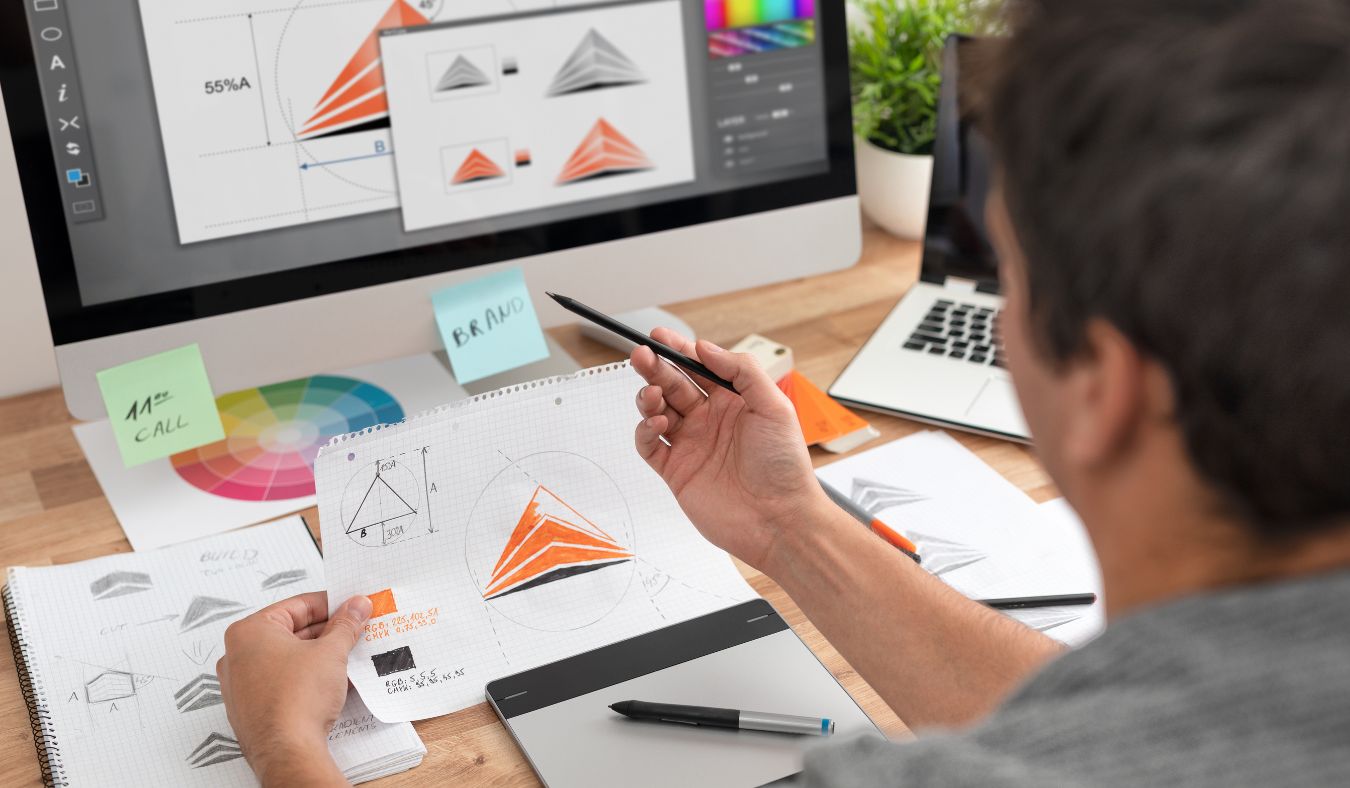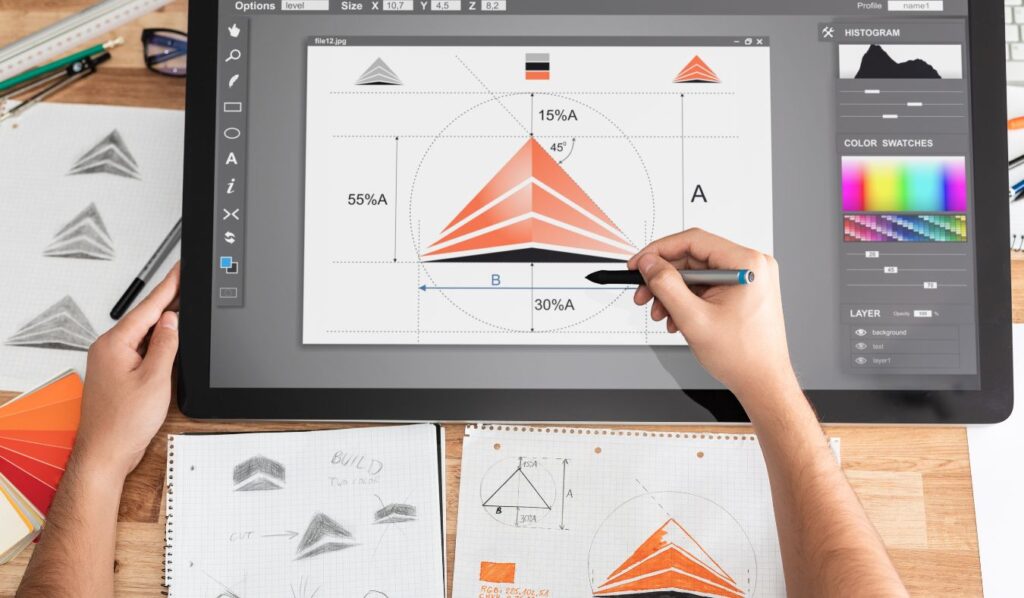Imagine spending weeks (and a good chunk of your marketing budget) on a new logo, only to end up with something you hate. It doesn’t feel like “you” and worse, it misses the mark entirely with your target audience. Sadly, this scenario is more common than you’d think. The root cause? Miscommunication.
Miscommunication Harms Brands
When the client and designer aren’t on the same page from the start, it leads to:
- Wasted Time: Endless revisions because the core concept was never aligned to your brand needs.
- Wasted Money: Paying for work that ultimately doesn’t get used, or worse, harms your brand perception.
- Subpar Results: A rushed, generic logo that fails to differentiate you from the competition.
Briefs = Foundation
A well-written logo design brief is your roadmap to success. It gets everyone focused on the same destination – a logo that truly represents your business.
Contracts = Protection
Think of a logo design contract as an insurance policy for your investment. It answers those less glamorous, but vital “what if…?” questions:
- What if the client disappears without paying?
- What if the logo gets used in ways it wasn’t intended for?
- What if endless revisions drag on without additional payment?
1. Key Components of a Logo Design Brief
A great design brief isn’t about filling in blanks on a template. It’s about providing a clear snapshot of your brand and its goals that will inform the designer’s creative decisions. Here’s what to include:
About Your Business
- Mission Statement: What do you do, and WHY? What problem do you solve for your clients or customers?
- Industry: The vibe of a tech startup is different than a law firm – your logo needs to fit within your niche.
- Ideal Client: Who are you trying to attract? Their age, lifestyle, etc., influences design choices.
Target Audience
- Demographics: Go beyond basics (age, location) – what are their pain points, values, and aspirations?
- Where Will They See It? A logo viewed primarily on tiny smartphone screens has different needs than one designed for a giant billboard.
Brand Personality
- 3-5 Key Words: Modern, playful, sustainable, luxurious, etc. Make sure these align with your true values.
- What It’s NOT: Sometimes defining what your brand isn’t is just as helpful to the designer.
Likes & Dislikes
- Inspiration Board: Collect logos (even outside your industry) that have elements you love (color, font, icon style).
- Deal Breakers: Point out common tropes in your niche you want to avoid, or logos you actively dislike.
Deliverables
- File Types: Do you need vector files (for scaling), web-ready (PNGs), specific social media profile image sizes?
- Variations: Black and white, color, icon-only…? Best to define this upfront.
Timeline & Budget
- Realistic Deadlines: Rush jobs rarely produce the best work. Be honest about when you truly need it.
- Upfront About Budget: This helps the designer tailor their proposal realistically to what you can afford and prevents mismatched expectations.
2. Essential Elements of a Logo Design Contract
Think of this contract as laying out the rules of the road for your logo design journey. Key areas to address include:
Ownership
- Client Owns the Rights: Standard practice is that upon final payment, you own the full copyright to the logo design.
- Source Files: Ensure the contract specifies that you receive the editable working files (usually in Adobe Illustrator format).
Usage Rights
- Be Specific: List out where you intend to use the logo: website, social media, business cards, product packaging, etc.
- Geographic Restrictions? If your business is primarily local, limit usage rights to that territory.
- Time Limits: Can you use the logo in perpetuity, or is the license only for a set number of years?
Revisions
- Rounds Included: 2-3 rounds is typical. Define what constitutes a “round” (a set number of small tweaks, major concept change, etc.).
- The Process: How will feedback be provided (email, a shared doc)? What’s the turnaround time for the designer’s response?
Payment Terms
- Deposits: Commonly 50% upfront, with the remainder upon final logo approval.
- Milestones: For larger projects, breaking payment down further (sketch approval, color approval, etc.) is wise.
- Late Fees: Disincentivizes clients who drag their feet on payment, which is unfair to the designer.
Kill Fee
- % of Project Fee: Protects the designer if you cancel after they’ve put in substantial work. The further along, the higher the % they retain.
- Scope Change Protections: What if your requests wildly change the agreed-upon project mid-way through? This clause allows for renegotiation or the designer to exit gracefully.
Termination Clause
- Get Out of Jail (Maybe): Outlines under what circumstances either party can end the agreement.
- Notice Required: Usually 30 days written notice, giving time to wrap up existing work or find a replacement designer.
Important: Always have a legal professional review any contract before signing, especially if dealing with high-value projects or complex intellectual property issues.
3. Additional Considerations
Non-Disclosure Agreements (NDAs)
- When is it Needed?: If you’re launching a product under wraps or your logo incorporates highly confidential information about your business model, an NDA may be necessary.
- Protects Both Parties: Ensures sensitive details won’t be leaked to competitors by the designer, but also gives you legal recourse if they do.
Finding Templates
- Free Options (Use with Caution): Sites like Docracy, etc., offer templates, but may not be tailored to design work. Always have them reviewed by a lawyer.
- Paid Templates: Often created by design-focused legal professionals, thus more likely to include the specific clauses needed.
- Balance Cost vs. Risk: For a simple logo design, a free template may suffice. For high-stakes projects, investing in a custom-drafted contract is wise.
Other Things to Consider (Depending on Project Scope)
- Trademarking: If you plan to trademark your logo, discuss this with the designer upfront, as it may influence design choices.
- Subcontractor Clauses: If the designer intends to outsource elements of the work (illustration, etc.), the contract should address ownership and quality control.
- Font Licensing: Many fonts require separate licenses for commercial use. Clarify who is responsible for acquiring these if needed.
4. Benefits for Both Client and Designer
Think of briefs and contracts as tools that allow both you and the designer to focus on what matters most – creating an amazing logo! Here’s how everyone wins:
Clarity = Efficiency
- No Wasted Time: Both sides are aligned on the goals, reducing endless back-and-forth and frustrating revisions.
- Streamlined Workflow A clear brief allows the designer to dive into creative solutions instead of guessing what you want.
- Scope Creep Prevention: A defined number of revisions and clear usage rights prevent the project from expanding beyond what was agreed upon.
Builds Trust
- Strong Foundation: Open, upfront communication sets the tone for a positive collaboration throughout the logo design process.
- Reduced Anxiety: Both client and designer know what to expect, minimizing stress and potential conflict.
- Focus on the Creative: When the business side is settled, more energy goes towards great design work.
Protection
- Peace of Mind: In the rare case things do go wrong, having a contract means you’re not left high and dry.
- Fairness for the Designer: Ensures they get paid on time and aren’t taken advantage of by demanding clients.
- Deters Bad Actors: Clients who balk at signing a fair contract or who ignore the brief are likely to be trouble down the line.
Getting Started
Ready to ensure your logo design project is a success? Start by getting the fundamentals in place by following the guidelines.
If you need any professional assistance contact Brand Sewa to protect your brand and create a logo that achieves your business goals!



